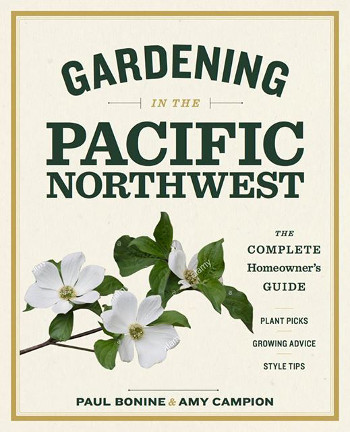Amy Campion
www.amycampion.com
Instagram: @campionamy
iNaturalist: @amycampion
Invertebrate populations fell 45% in 40 years. (Dirzo et al. 2014)
“If all mankind were to disappear, the world would regenerate back to the rich state of equilibrium that existed ten thousand years ago. If insects were to vanish, the environment would collapse into chaos.” —E.O. Wilson
Causes of insect declines
Pesticides
Pollution
Climate change
Invasive species
Habitat loss (agriculture, deforestation, urbanization)
#1 Provide keystone plants for caterpillars
Birds feed chicks 812 times per day, primarily caterpillars. (Robert Stewart 1973)
67% of caterpillars only eat plants from 1 family.
49% of caterpillars only eat plants from 1 genus. (Tallamy 2021)
14% of plants feed 90% of caterpillars—keystone plants (Narango et al. 2020)
Salix 312 spp. caterpillars Salix scouleriana
Prunus 240 spp. caterpillars Prunus virginiana
Populus 227 spp. caterpillars Populus tremuloides
Alnus 210 spp. caterpillars Alnus rhombifolia
#2 Don’t spray your aphids
760+ spp. PNW (Peterson 2018), food for 40 spp. in my garden:
Ladybugs (9 spp. in my garden)
Hoverflies (16 spp. in my garden)
Long-legged flies
Lacewings
Soldier beetles
Damselflies
Aphid mummy wasps
Square-headed aphid wasps
#3 Provide pollen plants
Pollen is protein: 2 to 62% protein—Food for baby bees
Buzz-pollination
Blueberry (Vaccinium corymbosum)
California lilac (Ceanothus)
California poppy (Eschscholzia californica)
Comfrey (Symphytum)
Honeywort (Cerinthe major ‘Purpurascens’)
Manzanita (Arctostaphylos)
Penstemon (Penstemon)
Nootka rose (Rosa nutkana)
Shrubby cinquefoil (Potentilla fruticosa)
Thimbleberry (Rubus parviflora)
Tomato (Solanum lycopersicum)
4,000 bee spp. in the U.S., 30% are specialists
Aster family plants
Asters (Symphyotrichum)
Goldenrod (Solidago)
Sunflowers—annual and perennial types (Helianthus)
Gumweed (Grindelia integrifolia)
More pollen plants for bees
Camas (Camassia)
Crabapple & apple (Malus)
Lupine (Lupinus)
Meadowfoam (Limnanthes)
Oceanspray (Holodiscus discolor)
Varileaf phacelia (Phacelia heterophylla)
Lacy phacelia (Phacelia tanacetifolia)
Raspberry (Rubus idaeus)
Spirea (Spiraea lucida)
Pacific waterleaf (Hydrophyllum tenuipes)
Willow, male (Salix)
#4 Provide nectar plants
Nectar is carbs—25 to 55% sugar
Honey bees are not native, may compete with native bees
Mint-family nectar plants
Wild bergamot (Monarda fistulosa)
Lesser calamint (Calamintha nepeta)
Self-heal (Prunella vulgaris)
Apiaceae nectar plants
Greater masterwort (Astrantia major)
Sea hollies (Eryngium)
Shrubby hare’s ear (Bupleurum fruticosum)
Aster-family nectar plants
Asters (Symphyotrichum)
Coreopsis ‘Zagreb’
Goldenrod (Solidago)
Gumweed (Grindelia integrifolia)
Pearly everlasting (Anaphalis margaritacea)
Sunflowers (Helianthus)
#5 Leave some bare ground
70% of native bees nest in bare ground
Mining bees—Mostly spring
Sweat bees—Spring/summer/fall
Longhorn bees—Mid- to late summer
Look for nests, bees flying low, cuckoo bees
#6 Provide cut stems
Small carpenter bees (Ceratina)
Hummingbird mint (Agastache)
Asters (Symphyotrichum)
Culver’s root (Veronicastrum virginicum)
Goldenrod (Solidago ‘Fireworks’)
Monarda
Sunflowers—perennial types (Helianthus)
Blue vervain (Verbena hastata)
Elderberry (Sambucus)
Hydrangeas
Raspberries & other caneberries (Rubus)
Roses
Sumac (Rhus)
Stems need to be cut to provide an entry point! Leave 12 to 15” long.
Larger stems (bamboo)—homes for leafcutter bees (Megachile)
Rose leaves, clarkia petals
Mason bee houses need maintenance—clean house and cocoons every year.
#7 Provide some deadwood
Leave a dead tree, drill holes
Stumpery
Beetles, solitary wasps, Anthrax!
Deadwood is full of life
#8 Put in a pond
Fish eat baby dragonflies
Dragonflies eat mosquitoes
Cardinal meadowhawk (Sympetrum illotum)
Shadow darner (Aeshna umbrosa)
Resources
Nature’s Best Hope: A New Approach to Conservation That Starts in Your Yard, Doug Tallamy. 2019.
The Nature of Oaks, Doug Tallamy. 2021.
NWF Native Plant Finder, National Wildlife Federation. https://nativeplantfinder.nwf.org/Plants
Selecting Plants for Pollinators: Pacific Lowland Region, The Pollinator Partnership. https://www.pollinator.org/pollinator.org/assets/generalFiles/PacificLowlandrx8_171017_090207.pdf
Enhancing Urban and Suburban Landscapes to Protect Pollinators, OSU. https://catalog.extension.oregonstate.edu/em9289
Pollinator Plants and Their Bloom Periods, West Multnomah Soil and Water Conservation District. https://wmswcd.org/documents/pollinator-plants-and-bloom-periods/
Pollinator Plants: The Maritime Northwest Region, The Xerces Society. https://xerces.org/sites/default/files/2018-05/17-048_03_XercesSoc_Pollinator-Plants_Maritime-Northwest-Region_web-3page.pdf
Pacific Northwest Insects, Merrill Peterson. 2018.
Nurturing Mason Bees in Your Backyard in Western Oregon, OSU. https://extension.oregonstate.edu/catalog/pub/em-9130-nurturing-mason-bees-your-backyard-western-oregon#:~:text=Mason%20bees%20cannot%20create%20their,urban%20areas%20than%20honey%20bees
The Bees in Your Backyard, Joe Wilson and Olivia Carril. 2016.
Native Plant Picks for Bees, OSU. https://extension.oregonstate.edu/catalog/pub/em-9363-native-plant-picks-bees
Pollen Specialist Bees of the Western United States, Jarrod Fowler. https://jarrodfowler.com/pollen_specialist.html

